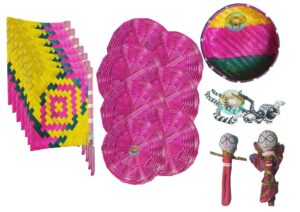Every citizen in our country is familiar to the term MITHILA. The first term which pops into a pro- Hindu’s mind, when talked about Mithila, is none other than Maithili, daughter of King Janak of the Videha dynasty.
We are very well versed with the role of Mithila in Ramayana, one of the largest ancient epics in world literature. But there is a lot more to know about Mithila other than the fact that it was the birthplace of Sita and the province of Raja Janak.
To start with, Mithila is a proposed state in India which borders with the Mithila state of Nepal. Also known as Janakpur and Mithilanagari, Mithila is spread over more than half of Bihar state of India, and parts of adjoining Nepal.
The history of Mithila is very vast. Mithila has been ruled by about 52 Janaks of Videha Dynasty. Nimi was known to be the first mythical king of this region. The most famous king- Seeradhwaja Janak, father of Sita was the 21st Janak of Mithila. Kriti Janak was the last Janak to rule Mithila. It is often rumored that Kirti was dethroned by public under the leadership of Acharyas because of her atrocious behavior. Apart from Videha dynasty, Pala Dynasty, Sena Dynesty, Karnata Dynesty, Oinwar Dynesty and Khandavala Dynesty were the ones to rule Mithila.
Mithila has its own cultural identity having-its own language, major rivers flowing through the region, diversity in festivals, historical memorials and monuments and its famous Madhubani art.
Maithili, an Indo-Aryan language, is spoken in Mithila state of Nepal and Northern India. Written in a Mithila variant of Kaithi, Mithila is the second largest spoken language in Nepal which varies greatly in Dialects.
Flowing from Himalayan Mountains in the north to the Ganges River in the south- Mahananda, Gandak, Kosi, Bagmati, Kamala, Balan, and the Budhi Gandak are the seven major rivers flowing in Mithila.
Mithila is said to be the only culture which is the end result of the convergence of two cultures- Nepalese Culture and Indian Culture. The Mithila region celebrates all of its religious festivals and each festival is unique in style and are characterized by heterogeneity of prayers, rituals and enthusiasms. Ram Navami, Janaki Navami, Fagu, Deewali, Chhaith, Chaurch and, Krishna-Asthami, Jurasital, Dasain, Jitia, Rabi-Sani, Shivratry, Satuain, Sama-Chakeba, etc are some of the festivals which add to the cultural distinction of Mithila.
One of the distinctive features of Mithila is songs. There are songs for every single event- birth, childhood, youth, wedding, meeting, separation, etc. It is said that no culture can match Maithili culture in its abundance of songs.
Some of the awe-inspiring historical monuments and memorials in Mithila are- Chandhradhari Museum, Kaali Temple, Rajnagar Ruins, Vikramshila University ruins, Kusheshwar Asthan Bird Sanctuary.
Chandhradhari Museum located in Darbhanga aims to preserve the ancient art styles and techniques which were used in making a sculpture of metal, painting, arms and armour, etc of Mithila.
The famous Kaali Temple in Madhubani is a place of utmost serenity for all the worshippers of Kaali Maa. Built by the king of Darbhanga, Kaali temple has a marvelous architechture.
Rajnagar Ruins of Madhubani is a ruin of the famous Naulakha Palace that was destroyed in 1934.
Vikramshila University in Bhagalpur was set up by Kind Darbhanga to preach Buddhist philosophy and teachings.
Kusheshwar Asthan Bird Sanctuary in Darbhanga is home to many birds namely- Mail, Lalshar, Dighouch, Nakta, Adhani, Chaha, Silli, Harial, Karan, Gaiber (White and Black) and Ratwa
Nagona Palace,Indra Bhawan , Singh Darwaaja,Kankalini Mandir, Manokamna Mandir, Mazaar of Makhdoom Baba are some other places of historical importance in Mithila.
Mithila is most famous for its Madhubani Art. Exact origin of Madhubani art form is unknown although Ancestors have stressed the origin of madhubani during the time when Raja Janak ordered the kingdom to decorate Mithila for the elated occasion of Sita’s Marriage.
Madhubani art has five distinctive styles namely- Bharni, Katchni, Tantrik, Godna and Gobar.
The credit for the official recognition of Madhubani art goes to Sita Devi when she was awarded a State award by the Government of Bihar in 1969 followed by a Padma Shri award to Jagdamba Devi in 1975.
Irrespective of so much historic essence attached to Mithila, Mithila is now suffering from the negligence, struggling for existence and seeking maintenance to sustain as a place of historical importance.
Helpless and Hapless monuments of Mithilanchal still await some recognition. These dejected and dishonored monuments, still standing regal and royal, are asking for some attention and battling for existence.
Article by : Payal Ladha
Produced by MithilanchalGroup

